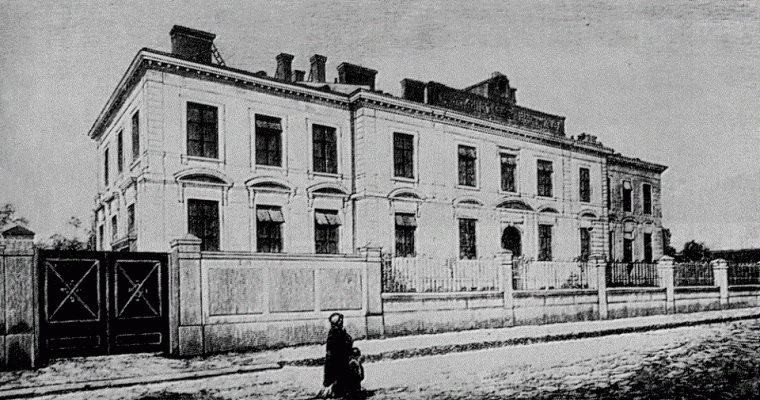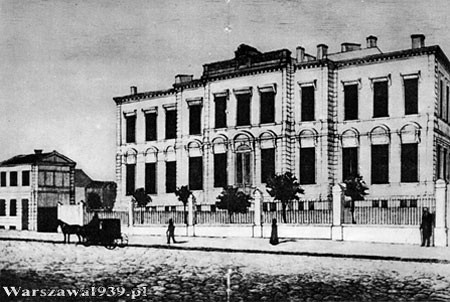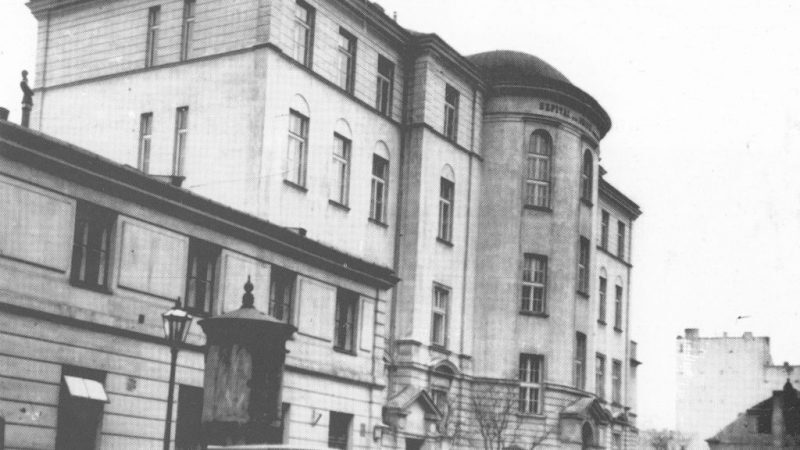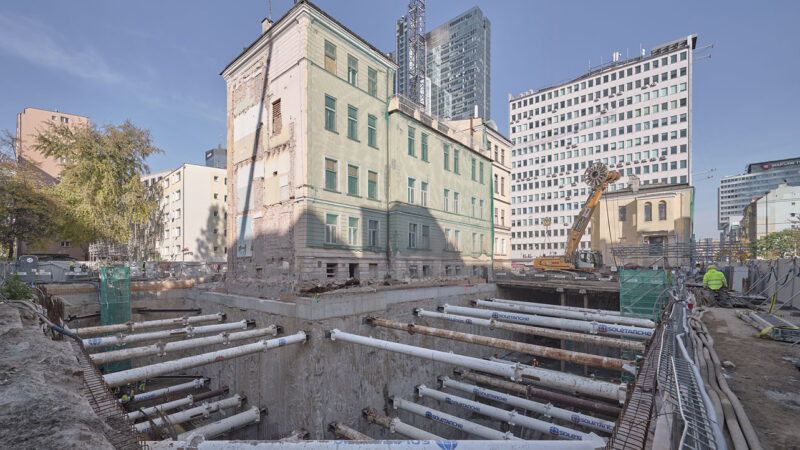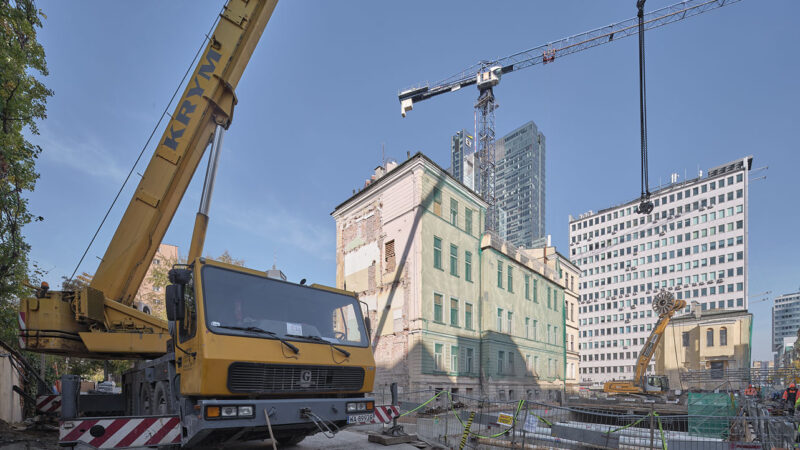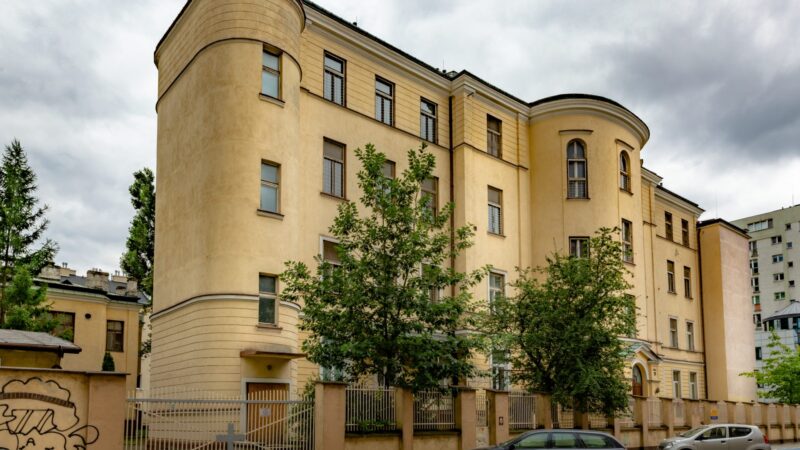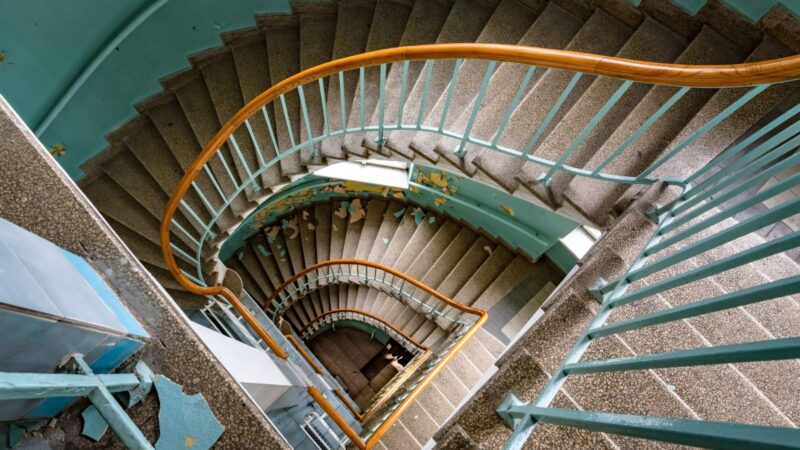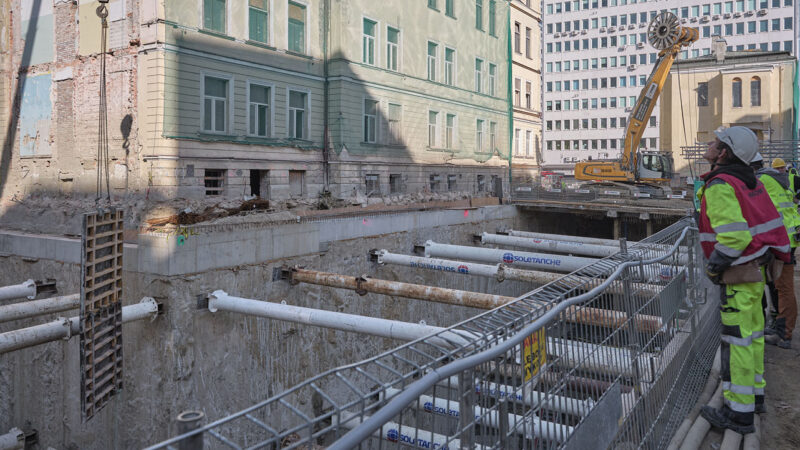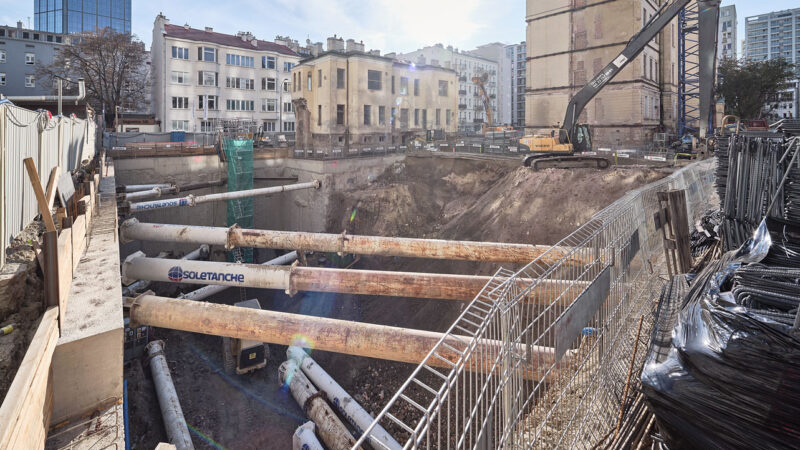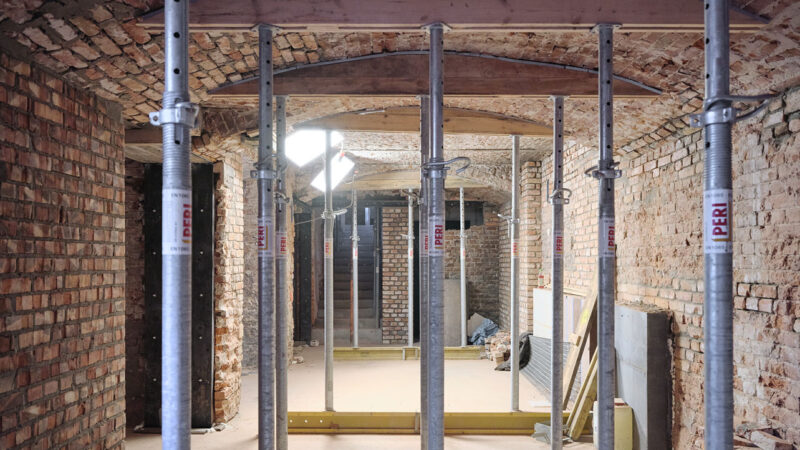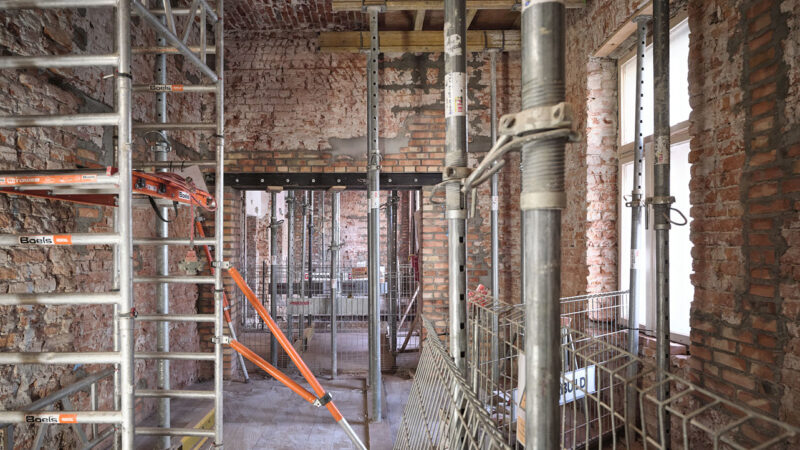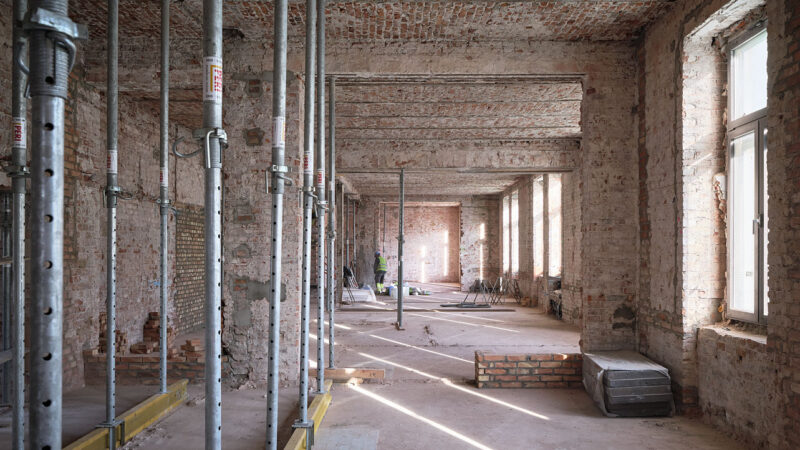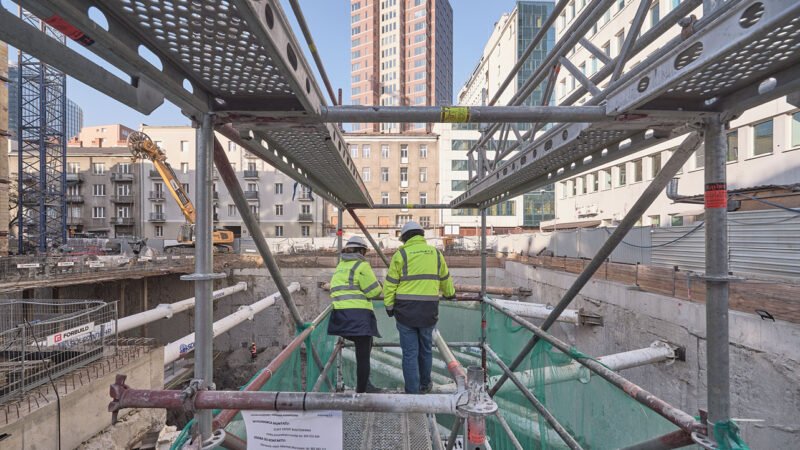Venue
The building situated between 51 Śliska Street and 60 Sienna Street in Warsaw was constructed between 1876 and 1878 and was subsequently known as the Bersohn and Bauman Children’s Hospital. The hospital was established through monetary endowments of two affluent Warsaw families. It was Majer Bersohn (1787-1873) who initiated the idea of establishing a hospital. His sons Mathias (1824-1908) and Jan (1829- 1913) Bersohn together with son-in-law Salomon Bauman (d. 1876) and daughter Paulina Bauman, provided additional funding. Attendees of the hospital opening ceremony included the President of Warsaw, General Lieutenant Sokrat Starynkiewicz.
Initially, the hospital had a 20-bed capacity, which increased to 43 beds by 1915. It should be noted that the hospital treated children free of charge. The main building was designed by Artur Goebel and subsequently underwent extensive expansion in the years 1924-1930, according to the design of Henryk Stifelman. Funded by the Dawidsohn family, a new Ophthalmology Clinic (standing to this day) was added to the main hospital building in 1900, the first director being Noe Dawidsohn.
Many eminent doctors worked in the hospital over the years, undoubtedly the most famous of them was Henryk Goldszmidt (“Janusz Korczak”), employed in the years 1905-1912. The post of the hospital’s chief physician was held respectively by: Ludwik Chwat (1878-1881), Szymon Portner (1881-1910), Adolf Poznański (1911-1923), and finally Anna Braude-Hellerowa (1930-1942).
Between 1878 and 1915, the hospital treated a total of over 20,000 patients, one-third of that number being Christian children. In 1923, as the fortunes of the Bersohn family declined and the Municipality of Warsaw withdrew its subsidy, a decision to close the hospital was taken. Through the efforts of Dr Anna Braude-Hellerowa and with the assistance from the Warsaw Jewish Community and the American Jewish Joint Distribution Committee, the institution was refurbished and expanded reopening in 1930. Dr Braude-Hellerowa became its executive director while Henryk Kroszczor was appointed its administrative director remaining in those capacities until 1942. By 1930, the hospital had 150 beds rising to nearly 250 by the outbreak of the war. In the 1930s, the facility was considered one of the most modern children’s hospitals in Poland.
History of the building – key dates
1876 – 1878 ESTABLISHMENT
1924 – 1930 EXPANSION
2014 HEALTH CARE PROVIDER FUNCTION CEASES
from 2023 onwards WARSAW GHETTO MUSEUM SEAT
Fortuitously, the facility did not suffer during the September 1939 bombings of the capital. As the occupational forces took over, the hospital (as all other such facilities) was made to report directly to the municipal doctor appointed by the Germans, Dr Kurt Schrempf, notorious for his brutal treatment of Jewish doctors. Shortly thereafter, the Germans appointed Dr Wacław Skonieczny from Inowrocław as the hospital commissioner. Contrary to initial fears, he proved very kind to the hospital staff and – as Marek Edelman (then working as a hospital courier) recollected – even after the Warsaw Ghetto Uprising, Dr Skonieczny supported the political underground in the ghetto and assisted in placement of a number of people on ‘the Aryan side.
’Whereas the initial months of functioning under the occupation were relatively routine for the hospital staff, the establishment of the Warsaw ghetto confronted them with a humanitarian crisis of unimaginable proportions. The forced starvation, extreme overcrowding and lack of adequate sanitary conditions meant that the hospital took in thousands of children, who we dying on a mass scale from tuberculosis, starvation sickness, typhoid fever and other diseases.
In 1942, the hospital doctors engaged in medical research into starvation sickness in children. Partial results of their work were published after the war in “Choroba głodowa. Badania kliniczne nad głodem wykonane w getcie warszawskim w roku 1942 (Starvation sickness. Clinical research into starvation conducted at the Warsaw ghetto in 1942), Warsaw 1946, a volume edited by Dr Emil Apfelbaum.
On 12 August 1942, at the liquidation of the “Small Ghetto,” the hospital was closed down. Its remaining young patients (then numbering over 400) were transferred to the hospital’s branch at the corner of Żelazna Street (no. 86/88) and Leszno Street (no. 80/82), established in October 1941. They were subsequently moved to a Stawki Street facility. Most of them were taken to the Treblinka Death Camp in September. At the prospect of their deportation there, the doctors chose to euthanise many. Following the Great Deportation, a small team of surviving medical professional of the Bersohn and Bauman Hospital and the Czyste Hospital opened yet another medical facility for the ghetto, at 6/8 Gęsia Street. Anna Braude-Hellerowa, who had a group of children in her custody, died in April 1943, during the Warsaw Ghetto Uprising. (A commemorative plaque affixed to the wall of the hospital building in 2001 memorialises her.) After the war, a handful of survivors described the hospital staff’s tragic struggle to rescue the youngest inhabitants of the ghetto, among them Adina Blady-Szwajger (d. 1993) and Henryk Kroszczor (d. 1979).
In the years 1942-1944, the building housed the Paediatric Clinic of the University of Warsaw, relocated there by the Germans from Litewska Street. In the course of the Warsaw Uprising, the hospital building was used as a field hospital by the Home Army’s tactical unit Zgrupowanie AK Chrobry II. After the war, the damaged building housed the Central Committee of Polish Jews (an autonomous political representation of Jews in post-war Poland in existence between 1944 and 1950). In 1953, the Children of Warsaw Paediatric Hospital opened there, becoming a branch of the Children’s Hospital in Dziekanów Leśny in 2000. In 2014, the facility stopped functioning in the capacity of a health care unit. On 7 March 2018, Prime Minister Mateusz Morawiecki and Deputy Prime Minister and the Minister of Culture and National Heritage Piotr Gliński jointly announced that the former hospital building would house the Warsaw Ghetto Museum. The completion of the construction and maintenance work is planned for the end of 2026.
August Grabski Bibliography
• Blady-Szwajger A., I więcej nic nie pamiętam (I Remember Nothing More), Warsaw, 1994;
• Engelking B., Leociak J., Getto warszawskie. Przewodnik po nieistniejącym mieście (The Warsaw Ghetto: A Guide to the Perished City), 2nd edition, Warsaw 2013;
• Kroszczor H., Działalność Szpitala dla Dzieci im Bersohnów i Baumanów w Warszawie w latach 1872-1923 (Bersohn and Bauman Children’s Hospital in the years 1872-1923), The Bulletin of the Jewish Historical Institute, no. 73, pp. 67–86;• Kroszczor H., Szpital dla Dzieci im. Bersohnów i Baumanów (1924-1939) (Bersohn and Bauman Children’s Hospital, 1924-1939), The Bulletin of the Jewish Historical Institute, no. 74, pp. 60–80;
• Kroszczor H., Szpital dla Dzieci im. Bersohnów i Baumanów (1939-1942). Szpital w czasie wojny (Bersohn and Bauman Children’s Hospital, 1939-1942. The hospital in the course of the war), The Bulletin of the Jewish Historical Institute, no. 76, pp. 33–47;
• Virtual Shtetl, https://sztetl.org.pl/pl/miejscowosci/w/18-warszawa/113-zabytki-kultury-materialnej/30678-szpital-dzieciecy-bersohnow-i-baumanow-w-warszawie (accessed 12 June 2018).


